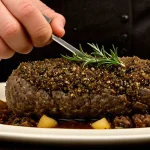Rethinking British Favorites for Modern Nutrition
Balancing traditional UK dishes with the demands of modern nutrition is a delicate art. Many iconic foods celebrated in British cuisine, such as pies, roasts, and hearty stews, are often rich in fats, sugars, or refined carbohydrates—elements that pose health concerns today. Yet, these dishes form the cultural backbone of British food heritage, making it essential to find ways to enhance their nutritional profiles without sacrificing their beloved flavors.
One effective strategy is reimagining recipes to emphasize healthy modifications while maintaining their traditional identity. For example, swapping out ingredients or preparation methods to reduce saturated fats and increase fiber content preserves the essence of the dish while aligning it with contemporary dietary recommendations. This approach respects the cultural heritage tied to British cuisine, recognizing that food is more than sustenance—it’s a reflection of history and community.
In the same genre : What are the secrets to a perfectly cooked haggis?
Beyond ingredient replacements, attention to portion control and cooking techniques can elevate these classics. Taking steps such as incorporating more vegetables or utilizing whole grains not only boosts nutrition but also revitalizes these recipes, ensuring they remain relevant in today’s context. Ultimately, embracing modern nutrition in traditional UK dishes fosters a healthier relationship with food, uniting respect for British culinary tradition with the pursuit of wellbeing.
Healthier Fish and Chips: Transformations and Tips
Transforming the classic fish and chips into a healthier meal centers on smart cooking methods and ingredient swaps that reduce fat while preserving flavor. Commonly, traditional fish and chips involve deep-frying, which significantly increases fat content. A leading healthy alternative involves baking or air frying the fish and chips, which cuts down oil use and slashes calorie intake without compromising crispiness.
In parallel : What Makes British Culinary Traditions Unique Today?
Replacing typical batters with whole-grain coatings can boost the dish’s fiber and nutrient content. Wholemeal or oat-based coatings retain the familiar texture but add nutritional value, supporting modern nutrition goals while respecting the roots of this iconic British staple. Additionally, potato choices matter. Oven-baked chips or sweet potatoes offer superior fiber levels and lower glycemic impact compared to standard deep-fried white potatoes.
Practical cooking tips include preheating ovens to high temperatures (220°C/425°F) for a crispier finish, and seasoning with herbs and spices rather than relying heavily on salt. Emphasizing these healthier methods balances maintaining the cultural heritage of traditional UK dishes and meeting contemporary nutritional standards. Through these deliberate modifications, fish and chips can remain a beloved feature of British cuisine while contributing to healthier eating habits.









